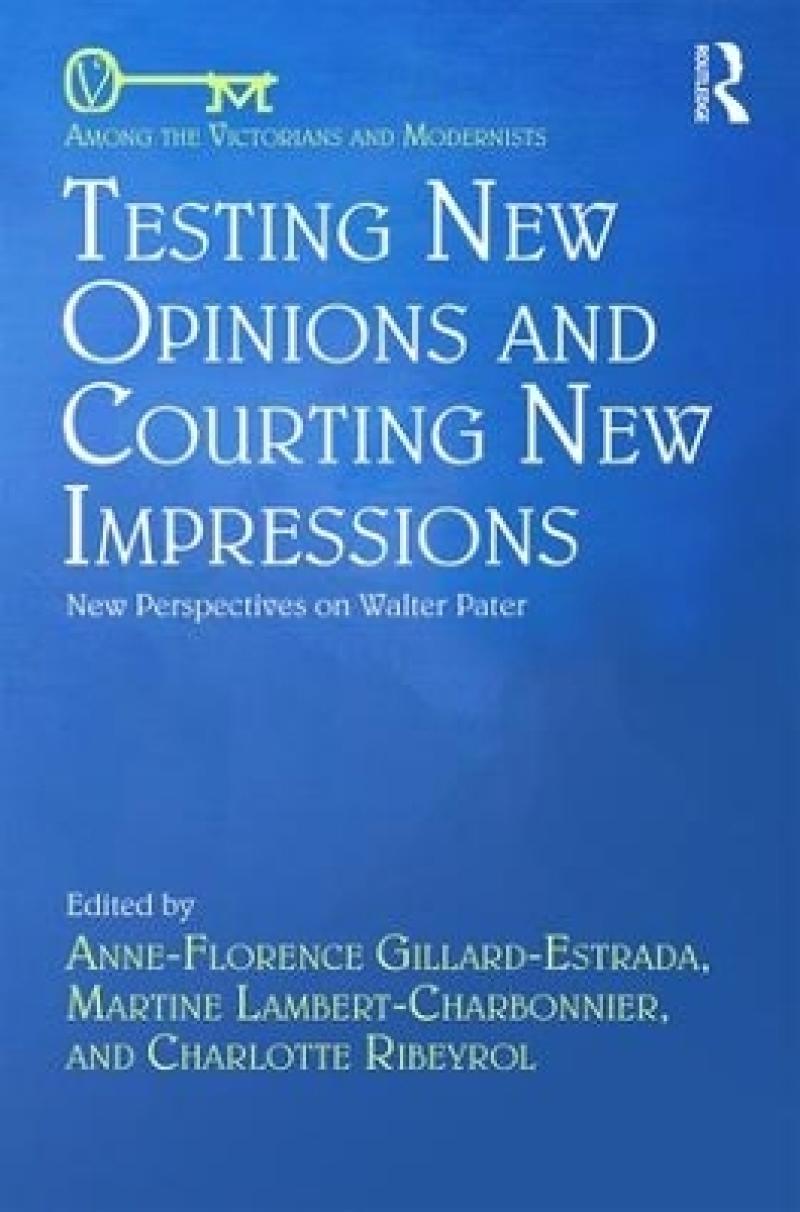<p>"Those attempting to analyse Pater need to be able to write with clarity and precision themselves [...] this is achieved throughout the volume [...] Both the editors and the contributors deserve praise for producing a volume in which a master of literary style has been written about with both insight and elegance."</p><p><strong>- James Downs, University of Exeter, <em>BAVS Newsletter</em></strong></p>
Reflecting Walter Pater’s diverse engagements with literature, the visual arts, history, and philosophy, this collection of essays explores new interdisciplinary perspectives engaging readers and scholars alike to revisit methodologies, intertextualities, metaphysical positions, and stylistic features in the works of the Victorian essayist. A revised contextual portrait of Pater in Victorian culture questions representations of the detached aesthete. Current editorial and biographical projects show Pater as fully responsive to the emergence of modern consumer culture and the changes in readership in Britain and the United States. New critical views of rarely studied texts enhance the image of Pater as a cosmopolitan aesthete dialoguing with contemporary culture. Conceptual analysis of his texts brings new light to the aesthetic paradox embodied by Pater, between artistic detachment and immersion in the Heraclitean flux of life. Finally, aestheticism is redefined as proposing new artistic and linguistic synthesis by merging art forms and embracing interart poetics.
Reflecting Pater’s diverse engagements with literature, the visual arts, history and philosophy, this collection of essays explores new interdisciplinary perspectives engaging readers and scholars alike to re-visit methodologies, intertextualities, metaphysical positions and stylistic features in the works of the Victorian essayist.
CONTENTS
List of Figures
Acknowledgments
Introduction
Bénédicte Coste, Anne-Florence Gillard-Estrada, Martine Lambert-Charbonnier, Charlotte Ribeyrol
Part I: Pater’s Modern Involvement: New Editorial and Biographical Approaches
1 Walter Pater and the new Media: the "child" in the house, Laurel Brake
2 Privileging the Later Pater: The Choice of Copy-Text for the Collected Works,
Lesley Higgins and David Latham
3 Habitus and the Multifaceted Self: are there different Paters?
Martine Lambert-Charbonnier
Part II: Intertextualities: The Aesthete and Contemporary Culture
4 Trace, race and grace: The influence of Ernest Renan’s Souvenirs d’enfance et de jeunesse on Pater’s Gaston de Latour
Adam Lee
5 The Loveliness of Things and the Sorrow of the World: Art and Ethics in Pater and George Eliot
Thomas Albrecht
6 A Great Chain of Curiosity: Pater’s "Sir Thomas Browne" and its Nineteenth-Century British Context
Daichi Ishikawa
Part III: Modern Interactions: Aestheticism, Desire and Artistic Detachment
7 "What an interesting period… is this we are in!" Walter Pater and the Synchronization of the "Aesthetic Life"
Joseph Bristow
8 A Dialectical History of the Subject of Same-Sex Desire: Queer Conclusions
Michael F. Davis
9 "Unimpassioned Passion’: Inner Excess and Exterior Restraint in Pater’s Rhetoric of Affect
Nicholas Manning
Part IV: Interart Poetics: The Art of the Portrait
10 "What came of him?" Change and Continuity in Pater’s Portraits
Lene Østermark-Johansen
11 Walter Pater’s Lives of Philosophers: Inversions of the Aesthetic Life in "Coleridge’s Writings" and "Sebastian van Storck"
Kit Andrews
12 Reading the Mona Lisa
Pascal Aquien
Notes on Contributors
Index
Produktdetaljer
Biographical note
Anne-Florence Gillard-Estrada is Associate Professor at Rouen University. Her research and teaching interests include British literature, art criticism, and painting of the 1860s–1890s.
Martine Lambert-Charbonnier is Associate Professor at the University of Sorbonne-Paris 4. Her field of research focuses on late-nineteenth-century literature and aesthetics in England, and especially on Walter Pater.
Charlotte Ribeyrol is Associate Professor in nineteenth-century English literature at the University Paris-Sorbonne. She is also a Member of the Institut Universitaire de France and a Marie Curie Fellow at Trinity College, Oxford (2016–2018).
